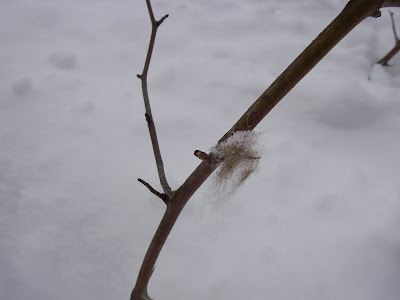photo courtesy of the
Wisconsin DNR
My last post was about Northern Cardinals, which are common all over Connecticut, especially at bird feeders. A decidedly uncommon bird found in our state is the Red-breasted Nuthatch. During the winter it is just as likely to find them visiting bird feeders stocked with sunflower seed and/or suet as it is to find them in their typical coniferous forest habitat. Their close cousin, the White-breasted Nuthatch, is found in all types of forest, is a regular visitor to bird feeders, and is far more common than the Red-breasted. For example, we counted 10 White-breasteds and only 1 Red-breasted at the White Memorial Museum Area feeders this past Saturday, 1/29. That is atypical of their population ratio here, as Red-breasteds are usually even less numerous than this. The day before, while working in the Pine Island/Duck Pond area, which is largely coniferous forest, we saw 2 White-breasteds and no Red-breasteds. Elsewhere in Connecticut Red-breasted Nuthatches haven't been reported much this winter. While we had 9 in the White Memorial territory on the Litchfield Hills Christmas Bird Count on 12/19, I think that only 1 was found on the entire Barkhamsted CBC on 12/26. That count was handicapped by an incoming blizzard, but we still managed to cover a good amount of territory before it hit and we didn't come up with any R.b.'s despite lots of suitable habitat. The one that we did find was at a bird feeder. Of the R.b.'s found on the LHCBC 3 were at the Museum feeders and 6 were along the Interpretive Trail and at Pine Island. When Red Pine trees covered parts of WMF property prior to their demise from a scale insect and diseases in the late 1970's, Red-breasted Nuthatches used to be fairly common in these plantations. They still are common in this type of habitat, as well as other types of coniferous forests in the northern tier of states and in Canada. When cone crops are poor in these locations we see an influx (which can be called an irruption) into the states to their south. That hasn't happened recently, which is why we have to work to find our remaining resident R.b.'s; or just visit our bird feeders at the Museum to see them.






 The Cornell Laboratory of Ornithology and Audubon have collaborated to bring to life a fantastic tool for keeping track of bird sightings and populations all over the world. It is called ebird, and it can be reached via
The Cornell Laboratory of Ornithology and Audubon have collaborated to bring to life a fantastic tool for keeping track of bird sightings and populations all over the world. It is called ebird, and it can be reached via 


















